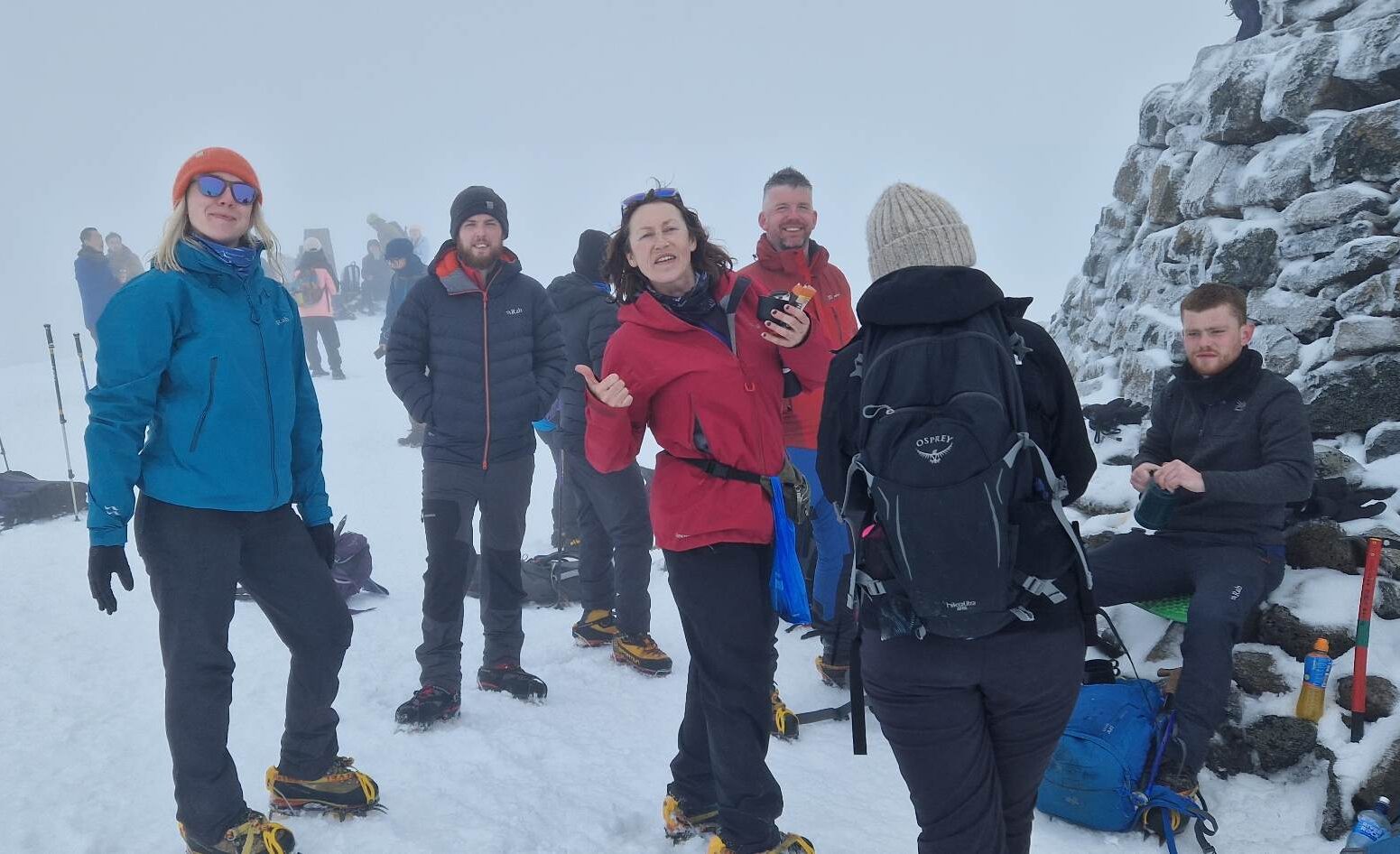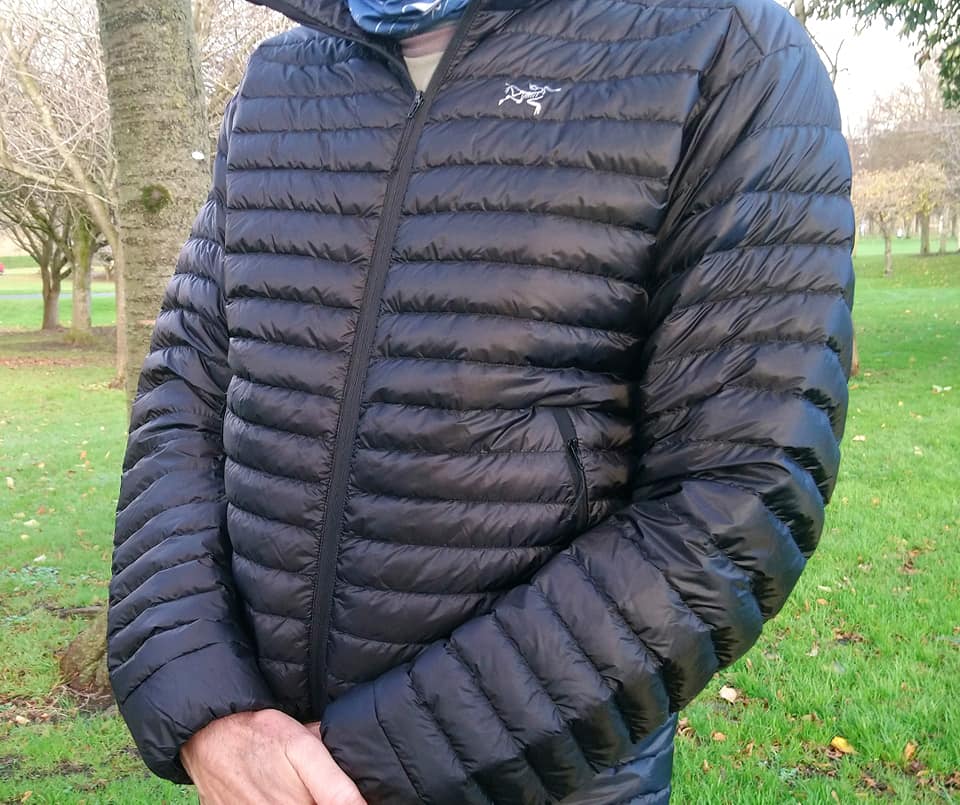Layering for Hillwalkers

Layering, in a mountaineering or hillwalking context, refers to the principle of wearing layers of clothes to maintain comfort, dryness and warmth when being active outdoors. A good layering system would involve a baselayer, worn next to the skin for comfort, a midlayer to provide insulation, and an outer layer to keep out the wind and the rain.
Within this basic formula, there are a number of options and tweaks that can be made depending on the conditions we are likely to encounter and our personal preference.
A good layering system allows for better temperature regulation as it is relatively easy to add or remove layers as required.
BASE LAYER:
The base layer is worn next to the skin. To be effective it should be close fitting without being too tight. The base layers layer role is predominantly to move moisture away from the skin by a process called ‘wicking’. This will make you feel more comfortable when working hard and will avoid the cold chill you might get when cooling off higher on the mountain or during a break.
The secondary role of the baselayer is to provide some insulation and a heavier material is typically worn in winter to achieve this.

In warmer weather keep your midlayers in the pack and hike in your baselayer.
The choice is usually between synthetic (polypropylene or polyester), or wool (predominantly merino). Synthetic baselayers offer very good wicking properties and are ideal for summer use. Merino wool offers more insulation, is more comfortable and is naturally antibacterial, it is a popular choice for winter hikers.
It is now possible to get a hybrid of the two, with both synthetic and wool fibres woven together to give the best of both. These are more expensive but work very well for winter activities. Long sleeve and short sleeve options are available, as are zipped fronts to give more flexibility when regulating body temperature.
Cotton should be avoided, as it will absorb a lot of moisture (in the form of sweat), and the hollow fibres of cotton won’t release it easily, so it stays with you and makes you feel cold and clammy when you slow down or rest.
MID LAYER
Next comes the mid layer, this will provide most of the insulation by trapping warm air in the fibres of the material.
This is often a synthetic fleece, which provides insulation as well as transferring moisture to the outer layers to evaporate. In warmer conditions this layer is often omitted and stored in the rucksack as a spare in case the weather gets cooler.

Midlayers should be insulating in cold weather.
In colder weather this can be substituted by a padded jacket or gilet (vest) to add extra warmth. This can be filled with down or a synthetic fill such as ‘primaloft’. Down becomes ineffective when wet, so synthetic fill jackets are better for damper conditions, as well as being cheaper. (See our blog on insulated jackets for more info: https://mountaintrails.ie/choosing-an-insulated-jacket/ ).
If it’s really cold then two mid layers can be used together.
Mid layers are generally not windproof or waterproof so need to be used in conjunction with an outer layer or shell.
OUTER LAYER (SHELL)
A good shell jacket with a hood will protect you from wind, rain and snow, and can be both waterproof and breathable. Often called hard shell jackets, the best of them incorporate a breathable membrane such as ‘Goretex’ which allows moisture to escape whilst keeping out the rain.

In wet weather a good hardshell is essential to keep you dry.
However, these membranes are not always effective and when there is only a small temperature difference across the membrane (on a very warm day for example) they will not perform at their best. In addition, if you are working hard and sweating heavily the membranes will not always be able to cope with the amount of moisture produced. This can result in a hot, clammy or wet feel inside the jacket.

Softshell jackets offer varying degrees of insulation, breathability and waterproofing.
To counter this soft shell jackets were introduced and are becoming increasingly popular, there are now many variations and styles.
They offer varying degrees of waterproofing, insulation, breathability and wind resistance. Typically, a softshell will be windproof and very breathable, provide some insulation, and will keep off the odd shower, though once it rains heavily you will need your waterproof hard shell jacket.
Softshell jackets are a good option if the weather forecast is reasonably good or if it is a warm day and you are likely to sweat a lot.
But always remember to pack a hard shell jacket in case it rains..!
SUMMARY
By using a layering system when hillwalking or mountaineering we have the flexibility to add or remove layers to regulate our temperature, stay dry and comfortable, and get the most out of our day in the mountains.
